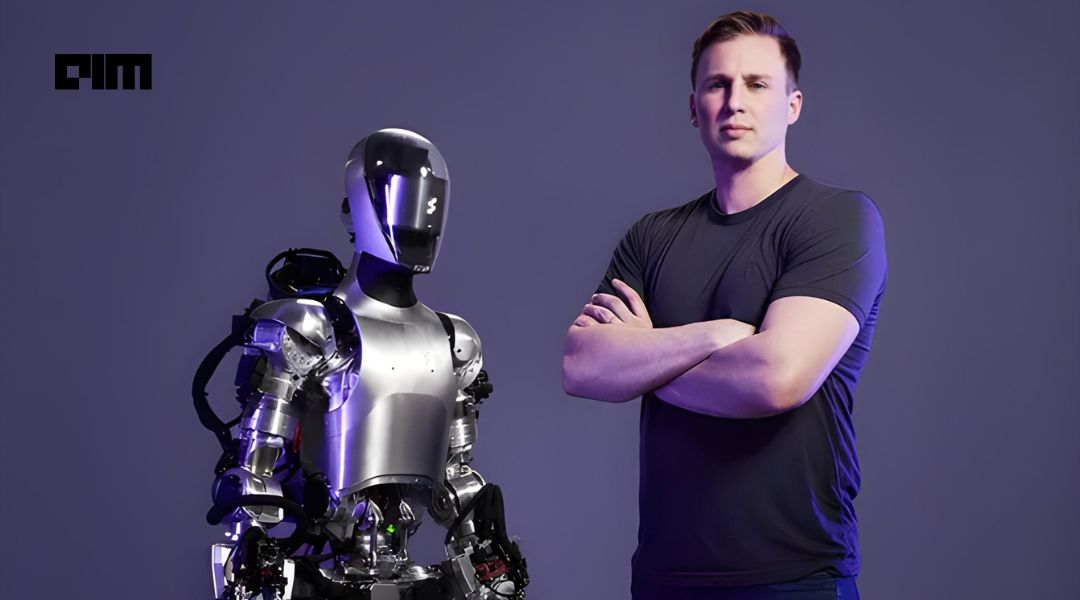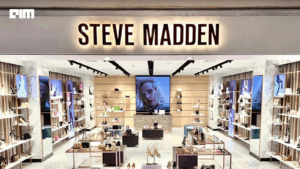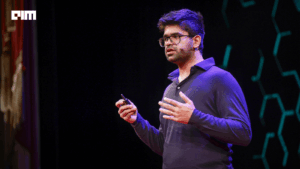Brett Adcock is clear about what it takes to make artificial general intelligence useful in the physical world. “You need a high-dimensional robot that can navigate and perform real-world tasks,” he says. “You can’t strap AGI onto a vacuum cleaner.”
While most of the AI industry is chasing model architecture breakthroughs or consolidation, Figure AI is building full-scale humanoid robots designed to perform real labor autonomously. Founded in 2022, the company has raised 2.34 billion dollars to date, including a 1.5 billion dollar Series C in early 2025. Backers include Microsoft, OpenAI, Nvidia, and Jeff Bezos. PitchBook pegs the company’s current valuation at 2.6 billion dollars.
Adcock, who previously founded Archer Aviation and exited software firm Vettery, invested a significant portion of his own money into Figure during its early days. Within five months, the company was spending one million dollars a month. By the end of its first year, it had built and walked a humanoid robot designed almost entirely from scratch.
The company’s latest version, Figure 3, is optimized for mass production and is now being assembled at a dedicated facility named Baku. It is 90 percent cheaper to manufacture than earlier prototypes. Figure aims to ship 100,000 units over the next four years, starting with workforce deployment in logistics, manufacturing, and healthcare.
Hardware reliability, long a barrier in robotics, has improved dramatically. Adcock points out that a decade ago, Boston Dynamics’ Atlas ran on hydraulics, leaked oil, and had dangerous high-pressure valves. By contrast, Figure’s machines are fully electric and built to industrial standards. “They’re now up there with rocket engines and jet turbines in terms of complexity,” he says, “but far more stable.”
What makes the system functional is not just mechanical design but onboard intelligence. Figure’s robots run neural networks that control everything from hand positioning to full-body motion. A recent demonstration showed one of its robots performing 60 minutes of continuous logistics work using a single Helix neural net model. The motion was smooth, efficient, and matched human behavior in both speed and quality.
From day one, the company committed to the humanoid form factor. Adcock sees it as the only viable foundation for general-purpose robots capable of handling a wide range of real-world tasks. He considered other approaches, robots with wheels or specialized limbs but believes those are local maxima. “If we can solve humanoids, we can solve almost anything,” he says.
Figure is pursuing two primary use cases. The first is industrial and commercial settings where tasks are repetitive and environments relatively structured. The second is the home, which Adcock believes is only a few years away from practical adoption. The engineering challenge is significantly higher in domestic settings due to unpredictable layouts, pets, and objects, but he believes the company is on track.
In an early logistics pilot, the team identified small-package handling as a critical bottleneck. The problem involved a mix of soft polybags, shifting piles, and unpredictable shapes—too complex for rule-based systems. Instead, Figure focused on teaching its robots the task using neural networks. They now handle a package every 3.5 seconds and are still improving.
Ease of use is a core part of the product strategy. Every robot is equipped with an eSIM and a phone number, allowing users to send commands via text or voice. “Speech should be the primary interface,” Adcock says. “You shouldn’t need to pull up a terminal to command your robot.”
Security is also central to the company’s roadmap. A dedicated team, including engineers from Google and Snapchat, is working on both product and corporate security. Robots are programmed with nonvolatile memory containing safety rules that cannot be overwritten or bypassed. “You can’t have root access vulnerabilities,” Adcock says.
Robots are already working inside Figure’s offices, where they move freely, offer drinks, and engage with employees. The company avoids anthropomorphic gimmicks like screens with facial features or cartoon-like expressions. “We don’t believe in putting googly eyes on serious machines,” he says. “Trust will come from performance, safety, and reliability.”
The company’s shift from software to hardware has required a different pace and mindset. Adcock describes hardware development as hypothesis-driven but far slower and more expensive. “In software, you can ship an update in days or weeks. In hardware, you’re buying parts, building, testing, and repeating. That can take a year.”
Still, he finds it deeply rewarding. Growing up on a farm, Adcock spent much of his youth building physical tools. “Hardware has its own beauty and logic,” he says. “And physics doesn’t lie.”
Investor interest in robotics has surged. In 2024, venture funding in the category reached 6.1 billion dollars, a 19 percent increase from the previous year, according to PitchBook. Tesla is developing its Optimus robot for in-factory use. Boston Dynamics continues to iterate on Atlas. Amazon tested Agility Robotics’ Digit in warehouses. But Figure is among the few pushing full-stack humanoid deployment from hardware and neural networks to in-house manufacturing.
Not everyone agrees that the humanoid form is the best path. Fei-Fei Li, cofounder and CEO of World Labs, argues that energy efficiency and environment should dictate form. “If we put robots underwater, they should be in the shape of fish,” she said in a recent interview.
Adcock sees it differently. The environments robots are entering homes, offices, warehouses were built for humans. And in his view, the best way to build AGI for the real world is to give it a body that fits. “We’re building real useful robots,” he says. “And we’re just getting started.”










